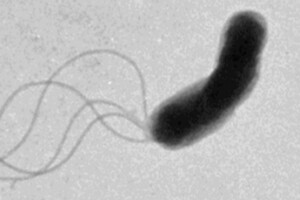Bacterial flagella rotate like a propeller.

Scientists used a high-tech microscope to observe rapidly thawed proteins and were able to find out how bacteria and archaea move. As Science alert reports, this remained a mystery for researchers for 50 years.
We have known for a long time that bacteria use a kind of tail – flagella. But the details of how this appendage acquires its twisted shape and pushes bacteria forward have remained a mystery to scientists.
Also read: German startup finds way to fight antibiotic-resistant bacterial infections
In animal cells, flagella move like animal tails. But in bacteria and archaea, they are like corkscrews that cannot create a train with a simple side-to-side movement. It turned out that their flagella move like a microscopic propeller.
In the course of the study, the scientists studied the molecular structure of the flagella of the bacteria Escherichia coli and the archaea Saccharolobus islandicus using cryo-electron tomography. It turned out that bacterial protein filaments can be in 11 different states, and archaea – in 10. The combination of these states causes the structure to generally twist into a spiral shape in both microbes, despite the difference in protein structure.
A structure that turned out, so stable that it can withstand torsional stresses, keeping its shape when moving. That is, it remains stable until the flagellum changes its direction of movement.
In E. coli, rectilinear swimming involves the movement of the flagellum counterclockwise. But when the bacteria change the direction of their movement, the forces acting on the flagella change its structure, twisting one or more threads from the tight bundle and loosening the superhelices, giving them a half-twisted or coiled shape.
As a result, the direct movement of bacteria changed to the opposite. Similar changes related to the direction of movement have not been observed in archaea.
Related video
Previously scientists from the University of California, San Diego developed tiny swimming robots that were able to clean light mice of bacteria that cause pneumonia. Researchers hope that such robots can be used to treat people in the future.




